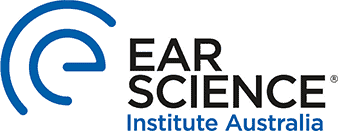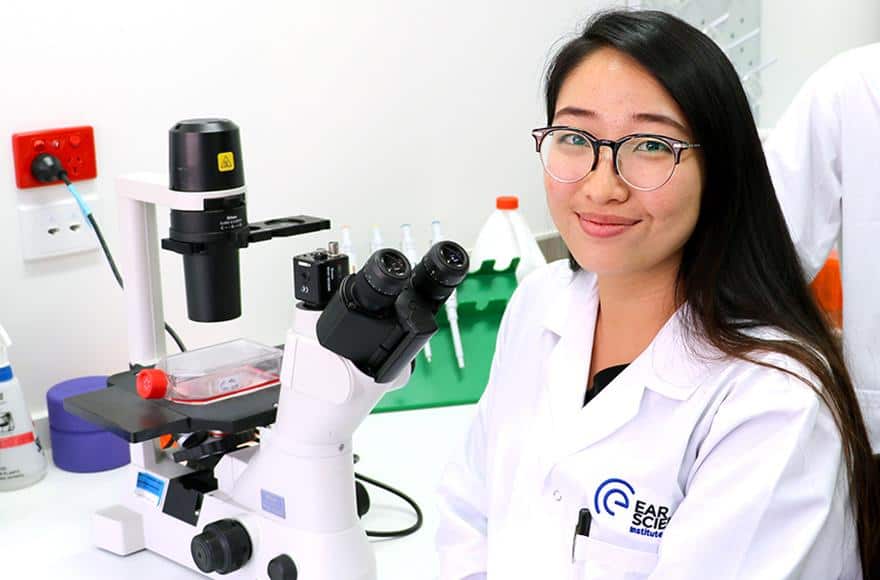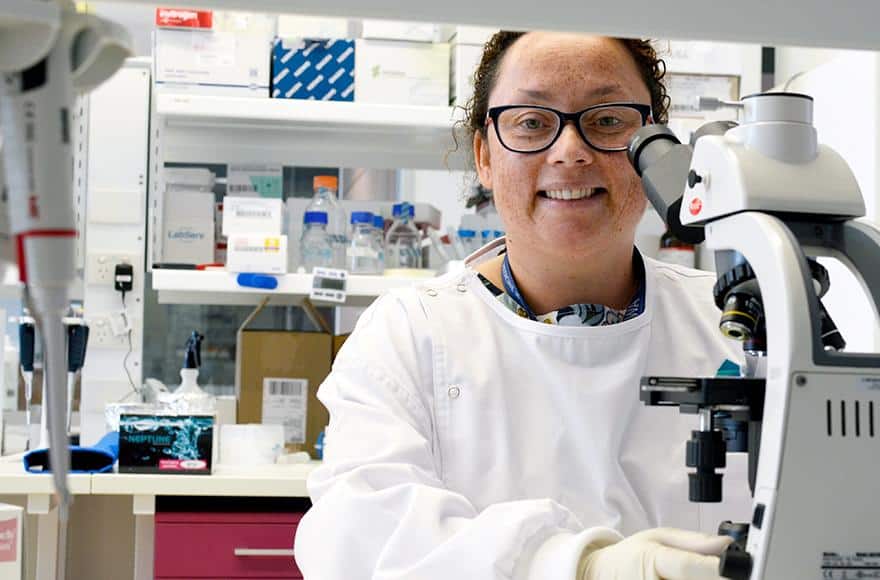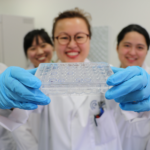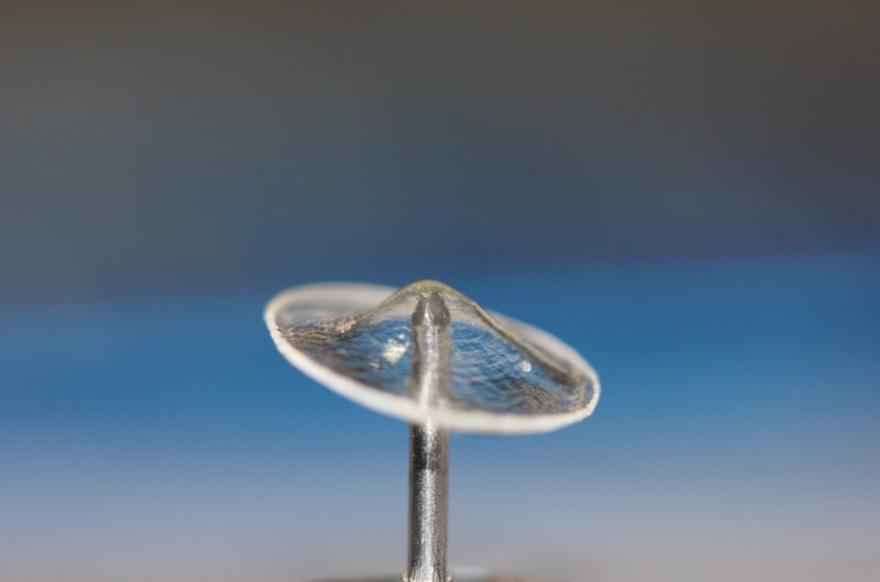All science begins with a question; how can we do this better? How can we fix this? How can we cure that? This is no more apparent than with the development of a tiny piece of material, no bigger than a thumbnail, that is set to revolutionise the world for people suffering from burst eardrums.
It all started from a question by Ear Science Institute Australia Director and surgeon-scientist Professor Marcus Atlas on how the organisation can treat patients to achieve better outcomes.
“As an ear specialist, I see people with perforated eardrums caused by chronic middle ear disease on a regular basis,” Prof Atlas said.
“We have a current method of care that gives the best results possible at the moment, but there was so much potential for a better treatment option to be created and to give my patients, and those of other surgeons here and around the world, better outcomes from their surgery.”
Together with Ear Science Associate Professor Rodney Dilley and the Future Fibres Hub team at Deakin University, Prof Atlas embarked on a project to develop an implant for this purpose.
After numerous years of research, testing, retesting and development, a tiny device has been created.
Looking like a contact lens, it is anything but. Made out of special material, initial studies have shown it to have healing properties by encouraging cells to grow across the implant and form a new seal. It provides improved hearing compared to the current standard of treatment, and it is a strong material, unlike anything that is currently available for chronic middle ear disease.
“One of the biggest problems we have had with the current method of treatment is the inability to see through into the middle ear,” Prof Atlas said.
“This is extremely important as this is the area that dangerous growths called cholesteatomas are found amongst other middle ear problems. Our new implant, called ClearDrum, will allow us to see through a patient’s eardrum and see if anything is happening behind it and save patients from potentially unnecessary surgeries.”
Independent studies predict over 330 million people suffer from chronic middle ear disease globally and that when left untreated, as it the case in over 99 per cent of cases, 28,000 people will die annually as a result.
Ear Science know this and the importance of getting ClearDrum to be available for patients as soon as possible. The Wellcome Trust Translation Fund in the United Kingdom also recognised the impact this implant can have on a global health scale and awarded nearly $4 million via a translational grant to Ear Science to fund human clinical trials.
“We are so honoured to have received such a prestigious and competitive grant as Wellcome Trust’s translational grant,” Prof Atlas said. “Our implant had to compete against a range of different research projects for this funding. It is a testament to the hard work of our team of scientists and those at Deakin University that we have been able to make an implant that could have such a dramatic impact on ear health and potentially help millions of people heal better, receive simpler surgical treatment and hear better after surgery.”
Commencing in June 2017, ClearDrum clinical trials will begin across Australia and perform the final stage of testing before Prof Atlas and his team’s vision can become a reality in surgeries around the world..
